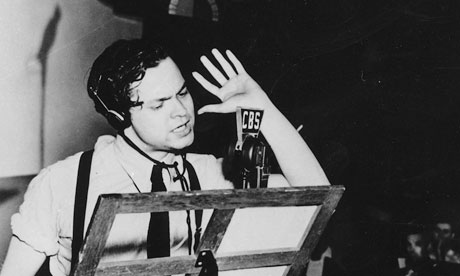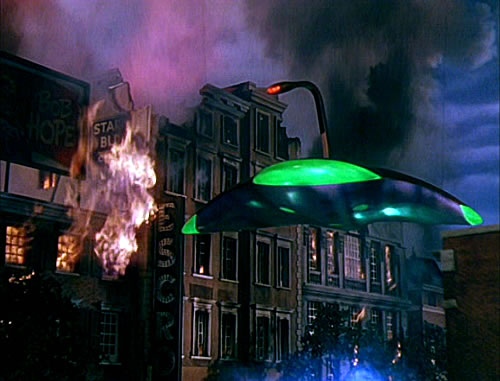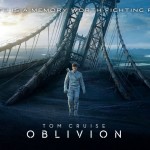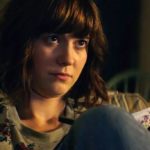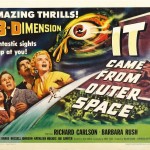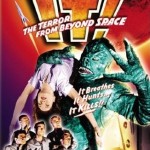A CINEMA REALIST’S REVIEW
OF
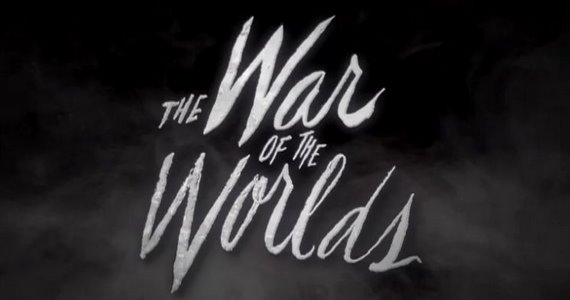
BY
KENNIE COMBS JR. (A.K.A. DOC HOLLYWEIRD)

Kennie Combs Jr. (aka Doc Hollyweird) wielding his movie-reviewing ax on Space Jockey Reviews! With Kennie on the loose, any movie is fair game on the chopping block!
What would we do if we were invaded by beings from another planet? How would we react when we found out that there was intelligent life out there in the universe? What if they had been living among us without our knowledge all along? Where would we run when our worst fears were realized and these creatures began to systematically wipe out the entire human race as we know it? Well certainly to this connoisseur of the silver screen, 1953’s War of the Worlds, starring Gene Barry and Ann Robinson, answered those questions as did the 2005 version, directed by Steven Spielberg, starring Tom Cruise.
Sure there have been many versions of this fine piece of literature to grace the big and small screen, including spin-offs, sequels and even, probably most famously, the 1938 drama narrated by and starring then up-and-comer Orson Welles, broadcasted over the radio to the masses. The radio version brought sheer and utter panic to many who truly believed, because of its realism in the style of a news broadcast, that we were being invaded by extraterrestrial beings. It wasn’t, however, until 1953 when producer George Pal brought to cinemas everywhere a visual representation of the H.G. Wells novel, that everyone saw for the first time, how this invasion could actually happen and what it would look like.
Directed by Byron Haskin, the 50’s War of the Worlds begins with us hearing narration by Sir Cedric Hardwicke sort of taking us through the aliens’ course and destination, ultimately choosing Earth as their target. The film wastes no time showing the meteors, which are later revealed as the spaceships crash landing into the ground, then introducing us to the main characters. The male lead, played by Gene Barry, is a scientist (Dr. Clayton Forrester) working in the field when reports of these “meteors” come in, prompting him to have a look. Upon arriving at the crash site, Forrester happens upon a young local girl by the name of Sylvia, played gracefully by Ann Robinson. Immediately unaffected by the initial appearance of the soon-to-be-revealed martian craft, the townspeople completely disregard the fact that this very object could be harmful, treating as if it were an attraction at a museum or amusement park. Of course, this very point is what ultimately dates the film. Even over its lower-budget effects and acting, you have to consider that back in the so-called atomic age, things were still new to us–such as space exploration and the possibility of life on other planets. I believe it was because of this that so many early science fiction motion pictures didn’t have as much of a plot or substance necessarily, but maintained a bit more of an innocence so to speak.
As the movie progresses, and we see for the first time the actual space crafts, to this reviewer it was like no other martian craft we had ever seen before. Most of us, when first exposed to movies involving aliens, were used to seeing a typical and simple flying saucer. These, however, in the 1953 film, were more aerodynamic and ergonomic looking, with a long, bent arm coming from the top, with a sort of mechanical-looking eye attached to it. Not long after they reveal themselves, we discover that these are their weapons, used to disintegrate anything and everything in their path.
Yes, the feel of the 50’s version sharply grabs on to a more militaristic and scientific feel, as opposed to the 2005 version which gives a more human interest story than its predecessor. Oh sure, the ’53 film does have its human elements with the loss of characters and budding love interest; but after viewing the two and comparing, the ’05 film definitely exceeds in making you truly feel for the characters on the screen, not just becoming another sci-fi flick, but a true-to-heart drama as well. I love in the Haskin film, especially the chemistry between the two main characters. You never get to truly see them express “love” for each other, but it does shine through subliminally. Overall, if it weren’t for the 1950’s War of the Worlds, I’m sure we would’ve eventually seen a film made; but this one was definitely the game changer for all sci-fi films to come.
Before its release in 2005, I remember being one of those skeptics when I heard about a “remake” of the classic film War of the Worlds, thinking, well sure it will have big budget special effects, but will the story be worth a damn? Much to my happiness, genius director Steven Spielberg proved once again that he can take any elemental storyline, and not only make it his own, but also build on what we had already seen; he proved that he could take it to the next level, all while paying homage to the Wells novel as well as the 1953 version.
As I mentioned before, the Spielberg War of the Worlds definitely delved more into the human condition. Normally we are used to seeing Tom Cruise play a pretty boy or just a straight out action junkie, but in this film we finally got to see a different side of the actor. Along with his co-stars Dakota Fanning and Justin Chatwin, Cruise’s character, Ray Ferrier, finds himself fighting for survival against the deadly alien attack that has ripped the planet apart. Not only does this pose a challenge for Ferrier, but it also makes him finally show just how much he cares for his family and how far he will go to ensure their survival–even against his own race.
Yes, the 2005 version had the astronomical special effects. However, I felt that it did not take anything away from the story, because it was beautifully shot and acted, with such emotional presence, and kept you on the edge of your seat the whole time. To me, the scenes with the alien invasion were brilliantly overshadowed by the ones involving Cruise having to struggle against the human characters, such as Tim Robbins, who does a great job at playing a sort of crazy conspiracy theorist type. It is for this reason alone that I applaud Steven Spielberg for his work in the genre of science fiction as well as all others. We truly feel that, when his films are viewed, we are transported to that very spot with those characters on the screen and taken out of our element, along for the journey for as long as it takes.
So what would we do if this happened to us, and how far would we go to protect the things dearest to us? Well, for this reviewer I hope we never have to find out. But, I can tell you one thing; it sure makes for great popcorn cinema.
Kennie Combs Jr.’s Rocket Rating for the 1953 Version
For a description of Rocket Rating 9, click on the Rocket Meter above!
Kennie Combs Jr.’s Rocket Rating for the 2005 Version
For a description of Rocket Rating 10, click on the Rocket Meter above!
You may also like these!
